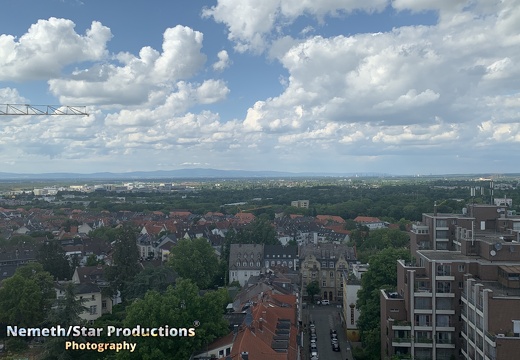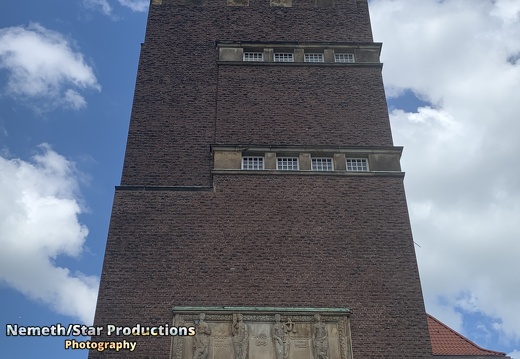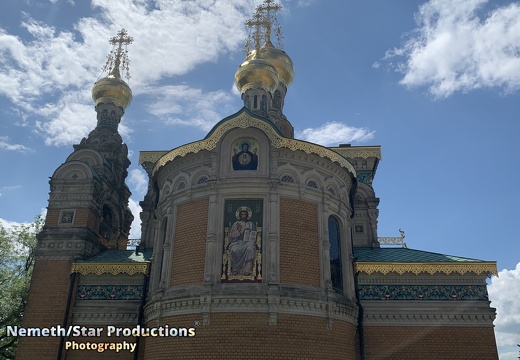Nemeth/Star Productions - Picture Gallery









Legal Notice
Privacy
© Nemeth/Star Productions 2025
Mathildenhöhe, at 180 meters above sea level the highest elevation in Darmstadt’s city center, was already a garden complex of the grand ducal court in the 19th century and was redesigned in 1833 in the style of an English landscape park. The garden was named after Mathilde Karoline Friederike von Wittelsbach, the wife of Grand Duke Ludwig III. Between 1877 and 1880, a water reservoir was built on Mathildenhöhe to supply Darmstadt with water, and in 1897 the Russian Chapel was built. In 1897, a development plan was created by Karl Hofmann. The Russian Chapel in Darmstadt, formally, the St. Mary Magdalene Chapel, is a historic Russian Orthodox church. The Russian revival style church with gold Onion domes was built between 1897–1899 by the architect Leon Benois and used as a private chapel by the last Emperor of Russia, Nicholas II, whose wife Alexandra Fyodorovna of Hesse was born in Darmstadt. The Russian Chapel is named in honor of the patron saint of Nicholas II’s mother. It was built of Russian stone and, as some people claim, built on soil from Russia brought to Darmstadt by train, and used during their lifetimes by the Russian Imperial family and court during regular visits to the Empress’s childhood home and to her family. The Swan Temple was built in 1914 for the third exhibition of the artists’ colony according to plans by architect Albin Müller. The temple overlooked a hillside garden with a pergola and a demountable cottage. A stairway leads directly to its base. This sculpture work was done by Albert Burghardt from Erbach in the Odenwald. Inside the swan temple there is a mosaic floor. The temple is crowned by a decoratively painted dome. Originally, the roof had a plain tile covering. Due to structural defects, the plain tile roofing was dismantled in 1987 and replaced with copper sheeting. The design of the small structure shows the contemporary arbor, kiosk and pavilion fashion. This fashion represents the idea of simple life aesthetically exaggerated and transfigured. The Darmstadt Artists’ Colony refers both to a group of Jugendstil artists as well as to the buildings in Mathildenhöhe in which these artists lived and worked. The artists were largely financed by patrons and worked together with other members of the group who ideally had concordant artistic tastes. The artists’ colony was founded in 1899 by Ernest Ludwig, Grand Duke of Hesse. His motto was: “Mein Hessenland blühe und in ihm die Kunst” (“My Hessian land shall flourish and in itself the art”). He expected the combination of art and trade to provide economic impulses for his land. The city of Darmstadt established a new artists’ colony in the 1960s. Seven ateliers and residences were erected between 1965 and 1967 according to plans by Rolf Prange. From 1900, the development of the southern Mathildenhöhe by the artists’ colony founded by Grand Duke Ernst Ludwig in 1899 led to its present form, dominated by the Wedding Tower and the 1908 exhibition building (standing on the water reservoir), both designed by architect Joseph Maria Olbrich. In early July 2014, the city of Darmstadt announced that the Mathildenhöhe exhibition hall would be renovated at a cost of 9.8 million euros. This was to support the application as a Unesco World Heritage Site in 2019. In February 2021, the costs had grown to 30.1 million euros. In 2020, Mathildenhöhe was nominated as a UNESCO World Heritage Site, but the decision was postponed until 2021. In 2021, Mathildenhöhe was inscribed on the UNESCO World Heritage List. Text Source: Wikipedia
Powered by Piwigo





























